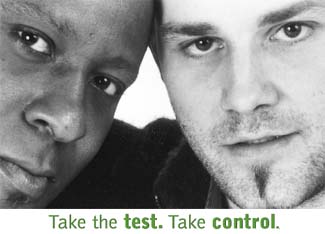
|
HRC Senior Policy Advocate
 Since first reported in 1981, HIV/AIDS has had a disproportionate impact
on gay and bisexual men. Even today, after more than 20 years of
education, gay and bisexual men comprise more than 40 percent of the
40,000 new HIV infections each year. And infection rates are increasing. Since first reported in 1981, HIV/AIDS has had a disproportionate impact
on gay and bisexual men. Even today, after more than 20 years of
education, gay and bisexual men comprise more than 40 percent of the
40,000 new HIV infections each year. And infection rates are increasing.
The infection rate is equally disturbing across communities of color - 38 percent of new cases are African Americans; 18 percent, Latino/a. Sadly, people under the age of 25 are estimated to make up at least half of new HIV infections. What can be done about this? The first step in preventing the disease is for each of us to know our HIV status - by being tested. Many new HIV infections occur when a person has unprotected sex with someone else who is HIV-positive but is unaware of his or her status. Unprotected sex with an HIV-positive person can lead to infection. While the gay, lesbian, bisexual and transgender community has spent two decades educating and working to decrease risky sexual behavior, we see rates of syphilis, gonorrhea and chlamydia climbing - sure signals of a rise in unsafe sex practices and a certain indication that HIV infection rates will rise as well. Of the 850,000 to 950,000 Americans who are currently HIV-positive, the Centers for Disease Control and Prevention estimates as many as 280,000 of them may not know their HIV status. As gay and bisexual men make up approximately 42 percent of new infections, we know a large percentage of those who don't know their status are in the GLBT community. Only by being tested and then acting appropriately with full knowledge of our HIV status can we stop this still deadly disease. We must take responsibility individually, and as a community, for this startling lack of knowledge about a disease that continues to affect us. We must talk with our health care providers as openly and honestly about our sexual orientations, our sexual activities and how best to protect ourselves from sexually transmitted diseases. Being tested and knowing our HIV status is the perfect first step in taking this responsibility. Knowing your HIV status can also enable you to get access to effective care and treatment should you be HIV-positive - meaning a longer, healthier life. Friday, June 27, is National HIV Testing Day and a perfect opportunity to take this important step. Recent improvements in technology can eliminate the need for a return visit to the testing site - and increase your ability to access HIV/AIDS information immediately after being tested. Specifically, there are two types of HIV testing - confidential and anonymous. In confidential testing, you give your name when getting tested, but only medical personnel or state health departments have access to the test results. You must provide written permission before this information can be released to others. Anonymous testing means that no name is given and only you are aware of the test results. Anonymous testing is available in 39 states, the District of Columbia and Puerto Rico. These results are given by randomly assigned numbers at the time of testing. While there are dozens of excuses for not getting tested - ranging from "I don't like needles" to concerns about confidentiality - the benefits of each of us knowing our status renders such concerns inconsequential. Individually, and as a community, we must step forward and take responsibility for not continuing to pass on this disease. To find a HIV testing site near you, log on to www.nhtd.org. For more information about people living with HIV/AIDS, log on to www.napwa.org Get tested. |